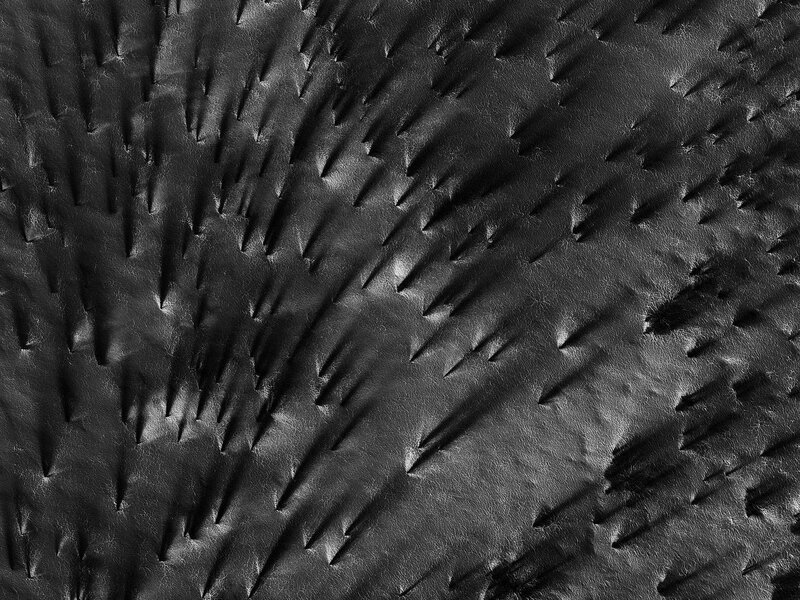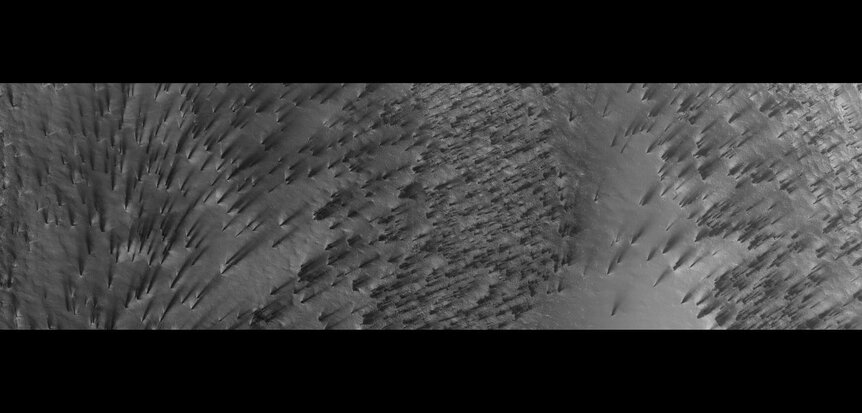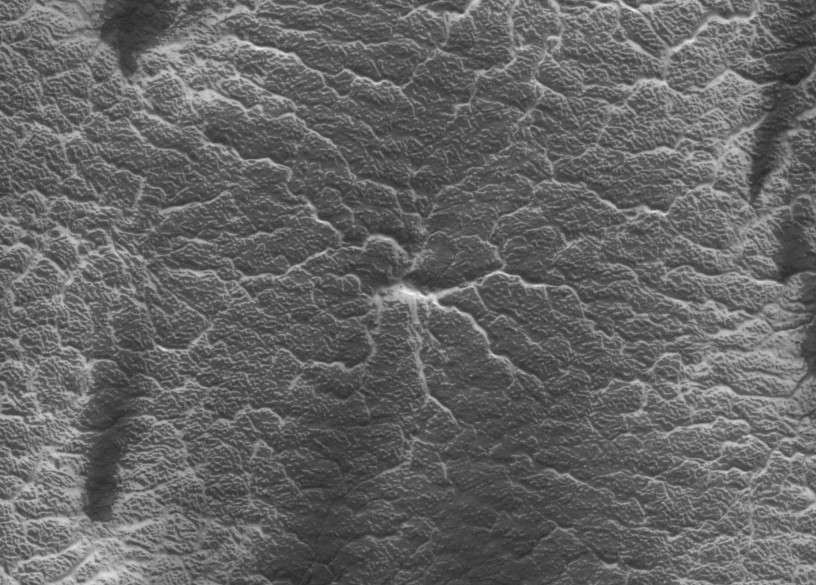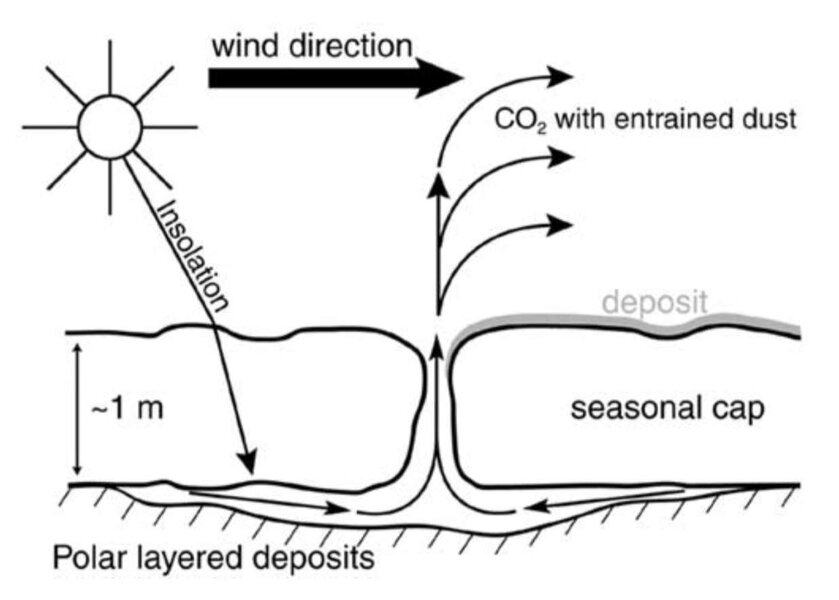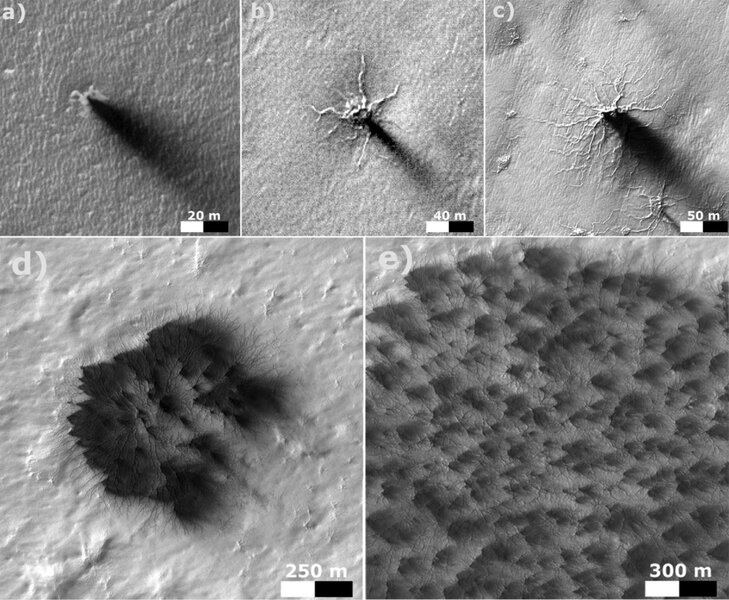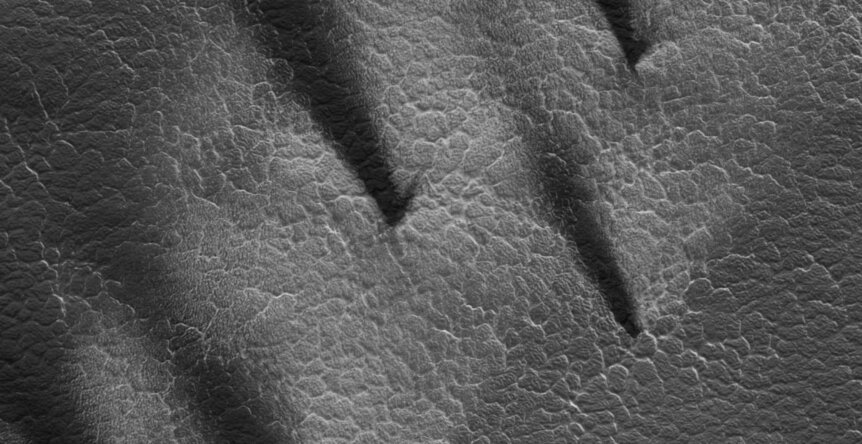Create a free profile to get unlimited access to exclusive videos, sweepstakes, and more!
Mars. Is. WEIRD.
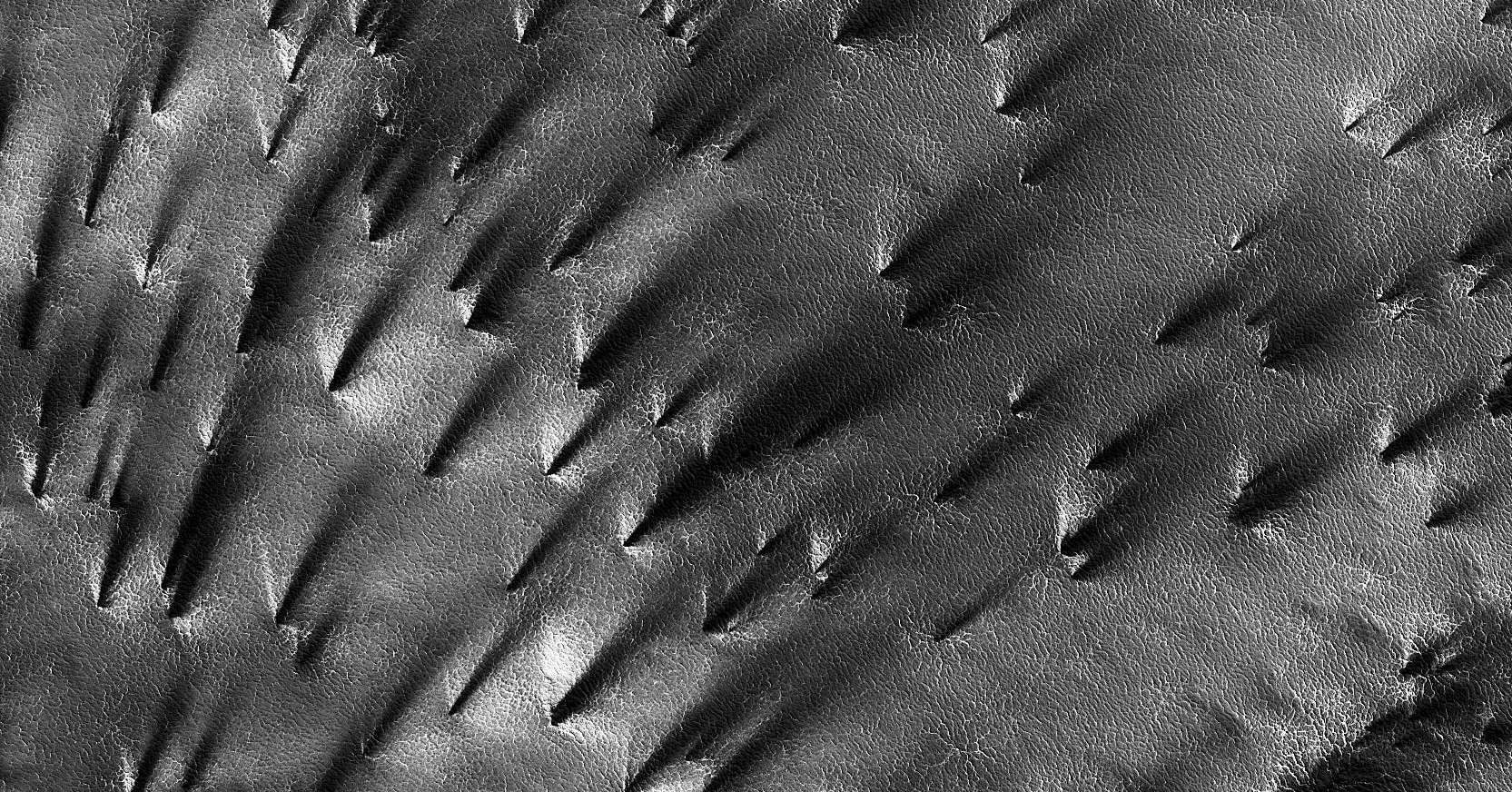
Mars is many things. It's cold. It's dry. It's spectacular.
It's also weird. Very, very weird.
At its south pole are a series of layered deposits, a huge region where nearly pure water ice mixed with dust and sand was laid down year after year eons ago. Wind erosion has carved this into beautiful terraces now. But when you zoom in, you see that there are regions where odd patterns dominate, an intricate and vast network of furrows, interwoven channels that stretch for many kilometers.
They're odd, certainly, but if you happen to look at the austral pole of Mars during local springtime, the vista is much stranger.
Oh, so much:
These features are fans of dark material sprayed out on the ground. The sources look similar to geysers, but the spray is from carbon dioxide, not water, and they have intrigued planetary scientists since they were first seen in the late 1990s.
This image was taken by the HiRISE camera on the Mars Reconnaissance Orbiter, showing a region just a few degrees north of the south pole. The fans of dark material are clearly wind-blown, tracing the direction of the wind; the entire image shown above is about a kilometer across. A wider view is even more stunning.
That strip shows an area about 5 km long. The whole place is dotted with these fans, all blown in different directions.
What are they? The technical term is araneiforms: spider-like features. Why spider-like? Well, here's one up close:
Many of the channels seem to radiate away (or towards) a central point, making them look a bit like spiders. Some don't have active plumes, like that one above, while others have many clustered together.
After studying them using orbital images for many years, scientists have put together an idea on what they are and how they work. The key to it all is frozen carbon dioxide: dry ice.
The atmosphere of Mars is mostly CO2. In the southern winter it freezes at the south pole, covering the mostly water ice cap with a slab of dry ice to a depth of roughly a meter.
This stuff is translucent, letting up to 70% of sunlight through. When spring comes, the Sun shines down on this slab, which passes through it and starts to warm the substrate beneath it. Frozen carbon dioxide doesn't melt, it sublimates, turns directly from solid into a gas. This is the key.
As the Sun heats this are, more and more gas builds up under the slab. At some point, the pressure is enough to exceed the material strength of the slab above it and the ice cracks, releasing the gas. Under pressure, the gas trapped under the ice around it rushes to the breech, carving shallow channels in the ground as it does, and blows out of it like a geyser, rising high into the sky. It carries darker material with it, the dust and grains of basaltic sand, which blow upwards at speeds of 40 kilometers per hour or so. Prevailing winds blow these plumes back, creating the long fans seen in the images.
Eventually, by austral summer, the slab sublimates completely. But then fall approaches, the CO2 in the air freezes out, and the process begins again. Year after year, millennium after millennium.
Over time, the gas flowing under the slab carves the channels deeper and deeper. Channels from different eruptions merge, forming the networked furrows all through the region. If you look carefully you'll see the northward facing parts of the channels are brighter; it's not understood why. It may be that frost or ice forms there and reflects sunlight better*.
Some of these troughs, just a meter or two wide, have been seen to form recently. They happen to lie near sand dunes, which may provide more abrasive grains to be swept up by the flowing gas, and so are more erosive.
Some places have many of these eruptions clustered together, some fewer. Perhaps the latter is where the slab is thinner and so cracks more easily, and the gas doesn't rush out as strongly. Instead of geyser-like eruptions it just... leaks. I'm speculating here, however.
Dark sprays of material are seen on Neptune's moon Triton as well, and it may be they form in a similar way. But nothing like this is seen locally; when you look at these, you're seeing features literally unlike anything on Earth.
Mars is indeed many things. But no matter what else it may be, it is truly an alien world.
My sincere thanks to Dr. Candice Hansen for taking the time to talk to me about these bizarre features.
*In these images you may see these channels as ridges, and the raised areas between them as pits. This is a well-known illusion that depends on the angle you see sunlight coming in, flipping our sense of depth. I have great examples of this and explain it here.
